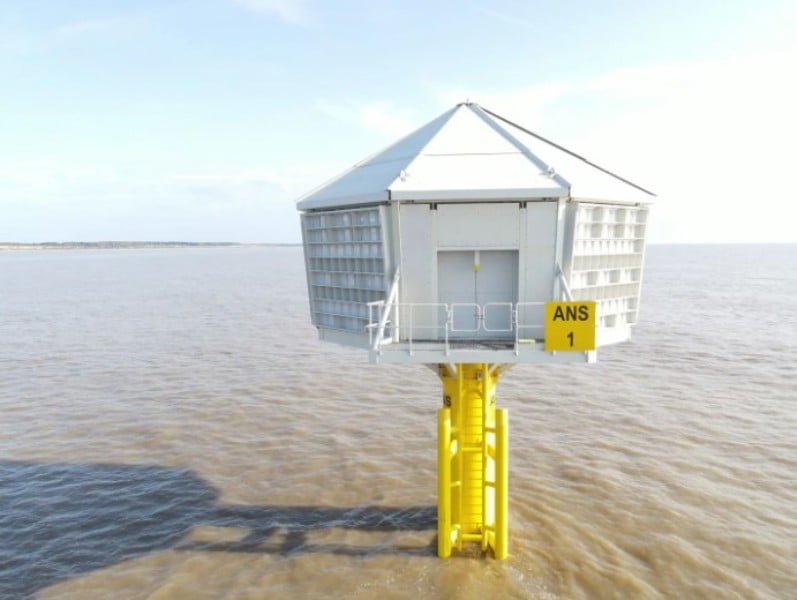Ørsted, a global offshore wind leader, has commissioned three “industry-first” nearshore artificial nesting structures (ANS) specially designed to house kittiwake, a vulnerable species of seabird, off the East Suffolk coastline. The nearshore ANS have been installed as part of innovative plans to compensate for potential impacts of the Hornsea 3 windfarm on the species.
Despite a lack of suitable natural nesting sites (i.e. cliffs) in Suffolk, Black-legged Kittiwake (Rissa Tridactyla) have colonized the area and populations are expanding, highlighting its ecological suitability. This makes East Suffolk one of the most likely places for artificial structures to be colonized quickly and for the compensation measures to have the highest chance of success.
The structures are located approximately 1km offshore – with one close to the Minsmere Nature Reserve and the other two located near South Beach, Lowestoft. These nearshore locations place the structures close to existing, thriving kittiwake colonies, whilst minimizing disturbance to local residents and business owners.
As the first UK offshore wind project to require ecological compensation, the Hornsea 3 team undertook extensive research to identify optimum locations and design features to maximize the chance that the ANS will be colonized by kittiwake.
A team of architects, engineers and ecologists were commissioned to design the structures in collaboration with local stakeholders and an Offshore Ornithology Engagement Group, which includes Natural England, the Marine Management Organization (MMO) and the Royal Society for the Protection of Birds (RSPB) as core members.
Each ANS comprises an octagonal topside with capacity for around 500 breeding pairs of kittiwake supported above the water on a single monopile. The roof pitch and overhang were specifically designed to mitigate avian predators.
The nesting faces have alternating rows of fully partitioned, open, and semi-partitioned ledges. This experimental design will provide valuable insight on the nesting preferences of kittiwake and help inform future compensation projects for the industry.
Individual nesting spaces are fitted with a sliding Perspex panel which will allow researchers to view the kittiwake from inside the structures without the birds being able to see them, as well as allowing for safe handling for monitoring purposes.
Two cameras have been installed on each ANS to capture birds prospecting and nesting attempts. Ørsted will also continue to monitor the existing colonies in Lowestoft and Sizewell for the lifetime of the ANS. Additionally, Ørsted is providing an initial £50,000 of funding to the Lowestoft Kittiwake Partnership, which aims to safeguard nesting birds.
Suffolk-based Red7Marine took the Principal Contractor role for the fabrication and installation of the structures, working closely with their contract partner Four Tees Engineering to deliver the unique octagonal nesting structure. All components were delivered to the quayside at Lowestoft for load out onto a jack-up barge before being transported out to location and installed.
Eleni Antoniou, Environmental Manager at Ørsted, said: “Kittiwake are listed as at risk from extinction and with climate change as a key driver to their decline, a move towards a green energy system could help considerably in the long-term conservation of the species. In the meantime, the provision of these structures will provide a safe, nesting space to enable future generations to raise young away from predators and out of town centers.
“This is a first of its kind project that required a great deal of collaborative work with stakeholders, architects, engineers and ecologists to develop a bespoke solution. We have already had our first kittiwake visitor to the structures and look forward to seeing our first long-term residents. We’d like to thank all those involved in this ground-breaking project so far.”
For more information and technical achievements on the Orsted ANS structures, read the full release here.

